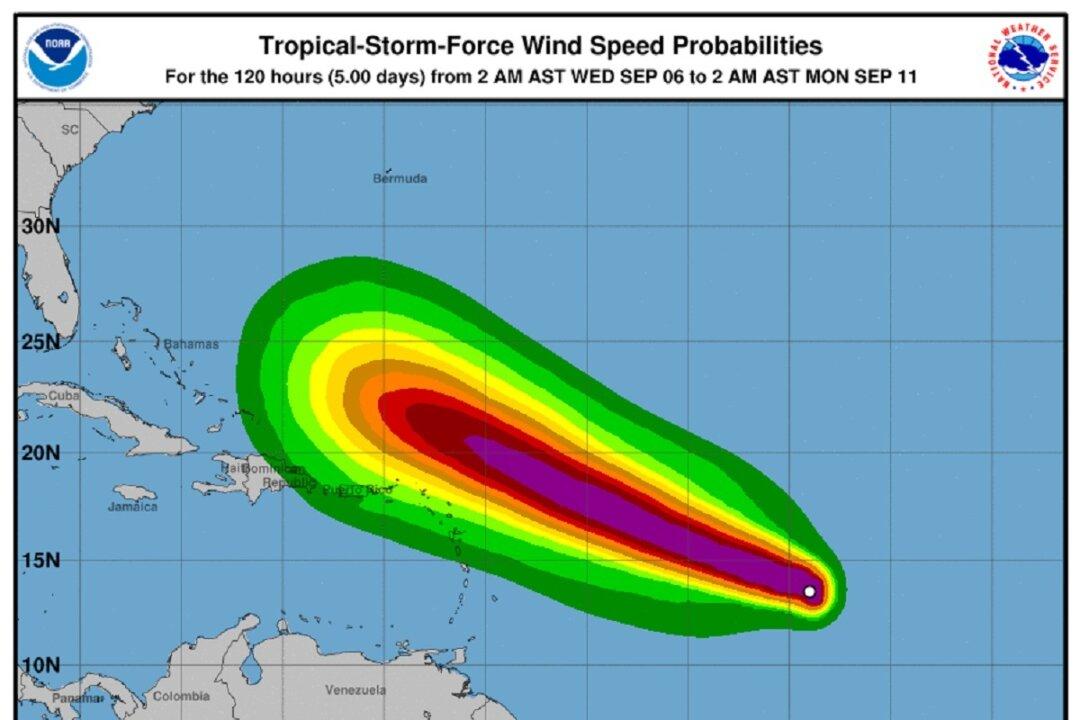Tropical Storm Lee is expected to “rapidly intensify” into an “extremely dangerous” hurricane by the weekend, the National Hurricane Center (NHC) has warned.
In a Sept. 5 update, NHC said the storm, which has formed over the Atlantic Ocean roughly 1,300 miles east of the Leeward Islands of the Caribbean, is forecast to become a major hurricane and could affect the Leeward Islands by the weekend.





